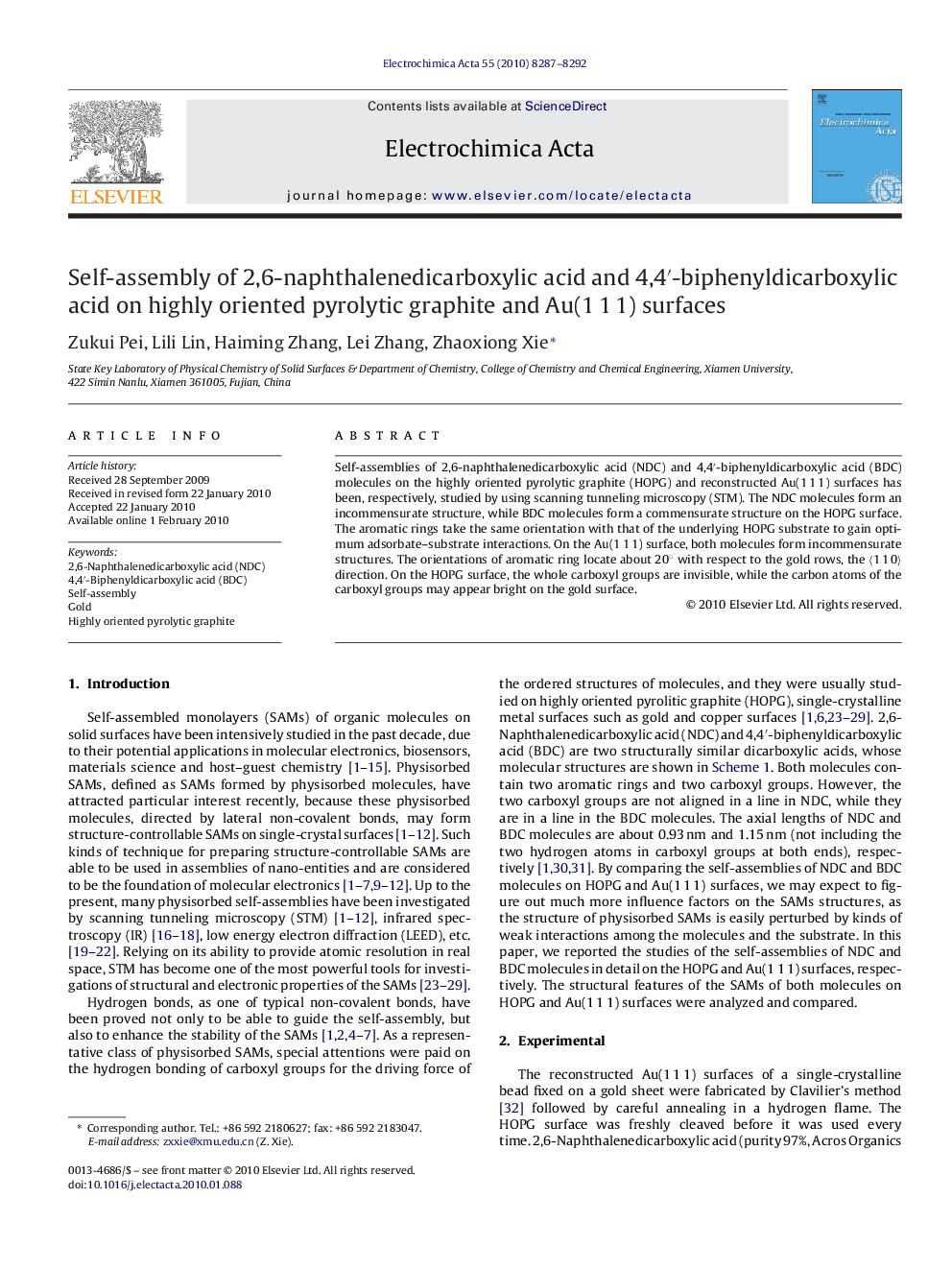| Article ID | Journal | Published Year | Pages | File Type |
|---|---|---|---|---|
| 190451 | Electrochimica Acta | 2010 | 6 Pages |
Self-assemblies of 2,6-naphthalenedicarboxylic acid (NDC) and 4,4′-biphenyldicarboxylic acid (BDC) molecules on the highly oriented pyrolytic graphite (HOPG) and reconstructed Au(1 1 1) surfaces has been, respectively, studied by using scanning tunneling microscopy (STM). The NDC molecules form an incommensurate structure, while BDC molecules form a commensurate structure on the HOPG surface. The aromatic rings take the same orientation with that of the underlying HOPG substrate to gain optimum adsorbate–substrate interactions. On the Au(1 1 1) surface, both molecules form incommensurate structures. The orientations of aromatic ring locate about 20° with respect to the gold rows, the 〈1 1 0〉 direction. On the HOPG surface, the whole carboxyl groups are invisible, while the carbon atoms of the carboxyl groups may appear bright on the gold surface.
